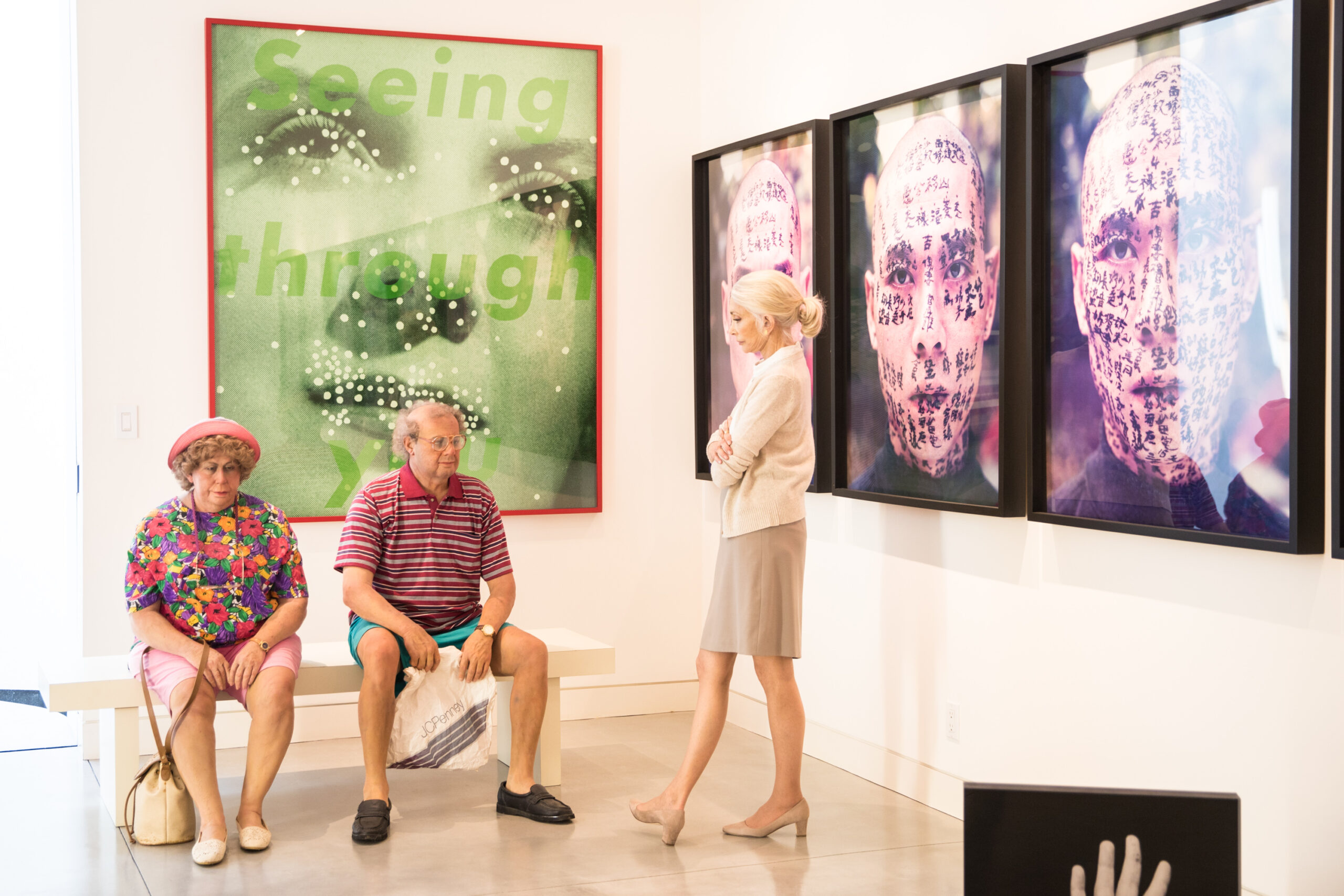5 Questions with Influential Art Advisor, Barbara Guggenheim
Jul 13, 2025
Barbara Guggenheim has spent decades at the intersection of art, culture, and commerce, establishing herself as one of LA’s most influential art advisors. With her keen eye for emerging talent and understanding of historical importance and market dynamics, she has guided collectors, institutions, and artists through the complex landscape of contemporary art. From her early days working alongside legendary dealers to building her own advisory practice, Barbara has witnessed firsthand the transformation of the art world. So naturally, we were eager to chat with her!
In this conversation, we explore how her advisory approach has evolved alongside the art market's transformations. Barbara shares insights on the most common pitfalls facing new collectors and delves into the notable shifts she's observed in the next generation of collectors…….
1AN: With decades of experience advising some of the world’s most discerning collectors, how has your approach evolved as the art market itself has transformed from private gallery sales to auction houses and now online platforms?
Barbara Guggenheim: Keeping up with the changes in the art world and art market is a full-time job. You’d think that if you bought a work by an artist and that has the whole art world, curators, collectors, critics, and dealers, behind him or her you would have made a wise investment. Even if the prices break records, it doesn't mean you're safe. In a matter of months those prices can plummet, and the art world moves on to the next new artist. To avoid the pitfalls of following others off a cliff, and to navigate the serpentine ways of the art market, it makes sense to engage an art advisor. The little that they charge can save you from making mistakes and help you to make decisions from strength of knowledge.
1AN: Your book, Art World: The New Rules of the Game, is considered essential reading for collectors. If you had to update one “rule” today based on current market dynamics, what would it be and why?
Barbara Guggenheim: If there's one rule, it’s to decide what your goal is. Some people buy for fun, and if you want to buy for fun, you have to define what your limit of “fun money” is. If you expect to make money, I doubt that the strategy of a quick return works as well now as it has in the past several years. You have to be willing to take a position and hold long term. Masterpieces have always appreciated over time, and I think that that's the area where smart money is going now. Take Picasso for example, for decades he's been an artist with a steady demand and large supply. That means that at any given time, a Picasso painting may come up at auction, like the one you've bought and, therefore, you don’t need to sell to know the value of your own Picasso. The same goes for Warhol, although I’m not sure his market will continue as it has since the younger generation of collectors don’t even know who Warhol’s major sitters were, such as Elizabeth Taylor. Since they've been brought up in the digital age, many don't understand the significance of Warhol's commentary on the printing techniques in his art.
1AN: For new collectors who may feel overwhelmed by the complexities of the art world, what are the most common pitfalls you help them avoid? And how do you build their confidence in making their first acquisitions?
Barbara Guggenheim: In acquiring art, you have to look everywhere and be ready to buy anywhere; galleries, private dealers, auction houses, and collectors. In the past few years, new buyers couldn’t just walk into a gallery cold and buy what they wanted. There were waiting lines for hot artists and the galleries could sell them to their longtime clients or established collectors. To get what they wanted, new buyers would have to turn to auctions. If you wanted something and others like you wanted the same work, a battle would ensue, and you'd likely have to pay more than gallery retail prices. That's why private dealers have a place in the art world. Because they have relationships with collectors and get works that the owners don't want to put up for auction and don't want the art world to know they're selling, they're a good source. If you don't know who they are, or which are reliable, working with an experienced art advisor cuts through all of that. It's important to distinguish between an experienced art advisor and anyone who just hangs up a shingle and calls themself an art advisor.
1AN:Beyond the initial acquisition, what makes it essential for collectors to consider long-term care and strategy such as restoration, insurance, and resale, and how does Barbara Guggenheim Associates support clients throughout this full lifecycle?
Barbara Guggenheim: Lots of people buy works of living artists from the galleries which represent those artists. In that case, there’s no need to do any due diligence. Once a work surfaces again on the marketplace (called the secondary market), one must do the necessary due diligence like checking authenticity, condition and provenance if possible. You may be given a fact sheet that says a painting belonged to the Prince of so-and-so, that's hard to verify. If possible, one has to compare what you've been given with the catalogue rasionné, or the people who've written the catalogue, or the artist's principal dealer, to make sure the painting you're buying matches historical records. A condition report must be made by a restorer who works on paintings like the one you're considering. For example, a conservator who works on Old Master paintings, which often have considerable damage, may proclaim your Ellsworth Kelly with only one scratch in it as a work in good condition. By contrast, a restorer specializing in contemporary art will look at the same Kelly with the same scratch and will consider that the single scratch would render the painting in fair condition. That would persuade any prospective buyer not to buy the work.
1AN: In advising everyone from YPO members to multigenerational family offices, what notable shifts have emerged in how the next generation approaches collecting compared to their predecessors?
Barbara Guggenheim: There's nothing like collecting and living with art to enhance your life. Collectors often start when they buy a new house and need paintings for empty walls. Others start with a wealth event or are parents who need to share something as a hobby. Believe it or not, art collecting has kept couples together more than anything I can think of! Living with art not only has a profound impact on collectors, but also their children who learn to share their parents' passion. I've worked with lots of YPO parents, and then their children later. I've also spoken at many NextGen conferences and advised the children of collector parents to advise what to keep and what to sell when dealing with their parent's estates.
Connect with Barbara here.
Author

Barbara Guggenheim
Barbara Guggenheim is one of the world’s best known art advisors. She holds a doctorate in Art History from Columbia University and has taught at Douglass College. She’s written what may be the definitive book on how the art world works....
Recommended Videos
:sharpen(level=1):output(format=png)/wp-content/uploads/2016/06/Steven-Schindler-1.png)
:sharpen(level=1):output(format=png)/wp-content/uploads/2016/06/Katherine-Wilson-Milne-1.png)
:sharpen(level=1):output(format=png)/wp-content/uploads/2016/10/Jacqueline-Towers-Perkins.png)
:sharpen(level=1):output(format=png)/wp-content/uploads/2018/10/Roxanne-Cohen.png)
:sharpen(level=1):output(format=png)/wp-content/uploads/2019/07/Alanna-Butera.png)
:sharpen(level=1):output(format=png)/wp-content/uploads/2016/01/Annelien-Bruins-1.png)
Steven R. Schindler, Katherine Wilson-Milne, Jacqueline Towers-Perkins, Roxanne Cohen, Alanna Butera, Annelien Bruins
:sharpen(level=1):output(format=jpeg)/wp-content/uploads/2023/07/ASF23-promo-pics-3222.jpg)
Charlie Manzo, Alaina Simone, Muys Snijders, Kyle McGrath, Caren Petersen, Jason Rulnick, Elysian McNiff Koglmeier, Bianca Cutait, Linda Mariano, Jack Mur
:sharpen(level=1):output(format=png)/wp-content/uploads/2016/06/Steven-Schindler-1.png)
:sharpen(level=1):output(format=png)/wp-content/uploads/2016/06/Katherine-Wilson-Milne-1.png)
:sharpen(level=1):output(format=png)/wp-content/uploads/2016/10/Jacqueline-Towers-Perkins.png)
:sharpen(level=1):output(format=png)/wp-content/uploads/2016/01/Annelien-Bruins-1.png)
:sharpen(level=1):output(format=png)/wp-content/uploads/2018/05/Mary-Buschman-1.png)
:sharpen(level=1):output(format=jpeg)/wp-content/uploads/2015/12/Heidi-Lee-Komaromi1.jpg)
:sharpen(level=1):output(format=png)/wp-content/uploads/2017/04/Drew-Watson.png)
Steven R. Schindler, Katherine Wilson-Milne, Jacqueline Towers-Perkins, Annelien Bruins, Mary Buschman, Heidi Lee-Komaromi, Drew Watson

:sharpen(level=0):output(format=jpeg)/wp-content/uploads/2025/07/AD3I0992.jpg)

:sharpen(level=1):output(format=webp)/wp-content/uploads/2025/11/sebastien-Laboureau-with-art-at-sagamore.jpg.webp)
:sharpen(level=1):output(format=jpeg)/wp-content/uploads/2025/11/Banner-Image.jpg)
:sharpen(level=1):output(format=jpeg)/wp-content/uploads/2025/11/Olga-de-Amaral.jpg)
:sharpen(level=1):output(format=jpeg)/wp-content/uploads/2025/11/F7642843-7A6C-4F72-964E-78BF1B6D4706_1_201_a-scaled.jpg)
:sharpen(level=1):output(format=jpeg)/wp-content/uploads/2025/11/20241206_113913-scaled-e1762280335115.jpg)
:sharpen(level=1):output(format=jpeg)/wp-content/uploads/2025/10/OC1A1144edited1029-scaled-e1761922604727.jpeg)